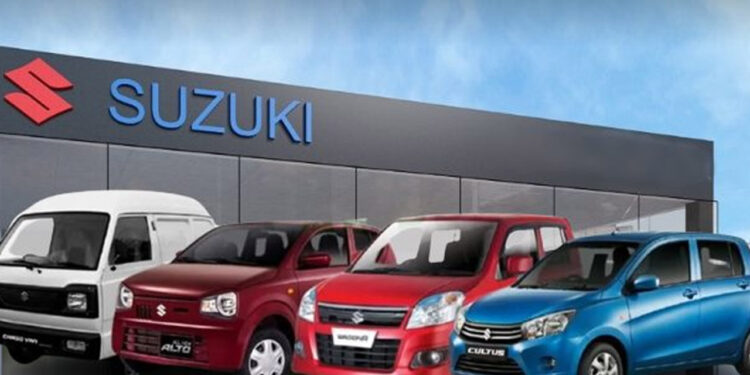Pak Suzuki Motor Company Ltd (PSMCL) surprised buyers on Friday with significant price hikes ranging from Rs65,000 to Rs180,000 for various models, despite a stronger rupee in the last five months.
In the interbank market, the dollar was trading at Rs307.10 in the first week of September 2023 compared to the current rate of Rs279.19, which should have reduced the landed cost of imported parts and accessories.
However, PSMCL increased the prices of Suzuki Alto VX, VXR, VXR AGS, and VXL AGS to Rs2.331 million, Rs2.707 million, Rs2.894 million, and Rs3.045 million respectively, up by Rs80,000 to Rs95,000 from their previous prices.
The Suzuki Cultus VXR, VXL, and AGS models saw a jump of Rs110,000 to Rs180,000, with new prices set at Rs3.858 million, Rs4.244 million, and Rs4.546 million respectively, compared to their earlier prices.
For the Suzuki Swift GL MT, GL CVT, and GLX CVT models, the new price tags are Rs4.421 million, Rs4.719 million, and Rs5.125 million respectively, up by Rs65,000 to Rs85,000.
| Model | Previous Price (Rs) | New Price (Rs) | Increase (Rs) |
|---|---|---|---|
| Suzuki Alto VX | 2,251,000 | 2,331,000 | 80,000 |
| Suzuki Alto VXR | 2,612,000 | 2,707,000 | 95,000 |
| Suzuki Alto VXR AGS | 2,799,000 | 2,894,000 | 95,000 |
| Suzuki Alto VXL AGS | 2,935,000 | 3,045,000 | 110,000 |
| Suzuki Cultus VXR | 3,718,000 | 3,858,000 | 140,000 |
| Suzuki Cultus VXL | 4,084,000 | 4,244,000 | 160,000 |
| Suzuki Cultus AGS | 4,366,000 | 4,546,000 | 180,000 |
| Suzuki Swift GL MT | 4,366,000 | 4,421,000 | 65,000 |
| Suzuki Swift GL CVT | 4,654,000 | 4,719,000 | 65,000 |
| Suzuki Swift GLX CVT | 5,040,000 | 5,125,000 | 85,000 |
PSMCL’s Head of Corporate Affairs, Shafiq Ahmed Sheikh, justified the price hike, stating that the company had not increased prices for over a year despite suffering significant losses due to production suspensions.
He cited inflation, rising overhead expenses, increasing costs of raw materials and accessories, and higher shipment/freight charges as reasons for the price adjustments. Sheikh mentioned that the company found it challenging to maintain current selling prices.
Moreover, he mentioned that the Red Sea situation and higher freight expenses made it difficult for the company to control prices, and while a minimal portion of the cost was passed on to consumers, the company was absorbing the majority of the increased costs.







